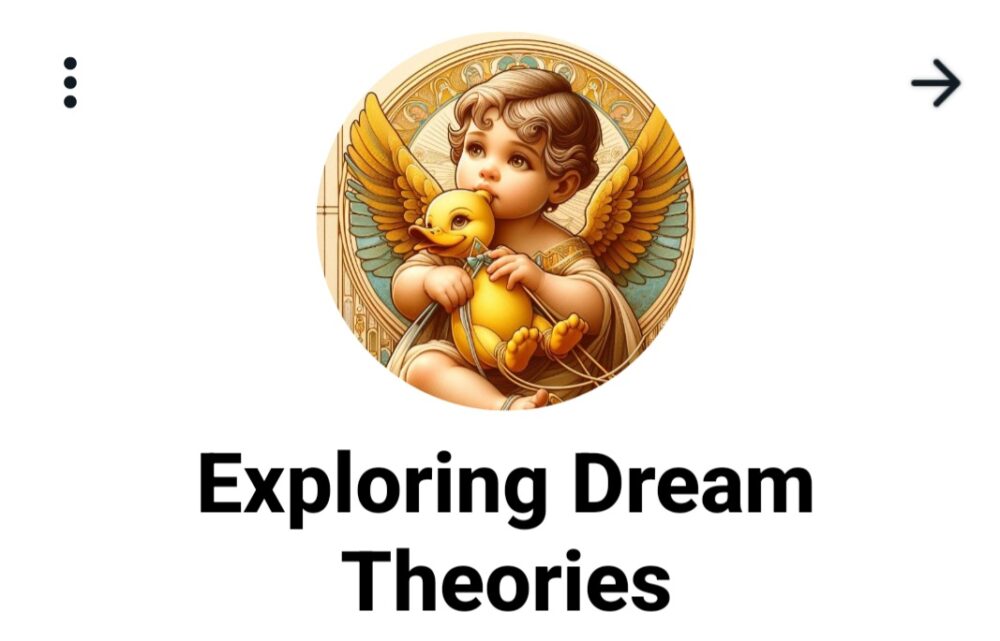Mark Blechner’s book, “The Dream Frontier,” Published August 15, 2014 by Routledge- presents a comprehensive and multifaceted exploration of dreams, integrating perspectives from clinical psychology, cognitive neuroscience, and various theoretical frameworks. The book is structured into four main sections, each delving into different aspects of dream analysis and interpretation.
Section I: Introduction and Overview
- Chapter 1: Blechner discusses dreams as a frontier of new human experience, self-knowledge, and our understanding of brain function. He emphasizes how dreams allow us to explore our concerns, desires, motivations, and the interaction between psychology and neurology.
Section II: New Ways of Thinking About Dreams
- Chapter 2: This chapter focuses on the context-based analysis of dream meanings, suggesting that dreams provide answers for which questions must be discovered. The concept of extralinguistic thought in dreams is introduced, along with the creation of “interobjects” – novel objects existing in dreams.
- Chapter 3: Blechner examines the ongoing creation of dream meaning, including secondary revision (upon waking) and tertiary revision (when sharing the dream). These revisions are seen as expansions of meaning rather than distortions.
- Chapter 4: Dreams are described as self-told stories that prompt a reconsideration of our understanding of the mind and consciousness.
- Chapter 5: Contrasting Freud’s view, Blechner argues that the manifest dream is a truer reflection of thoughts than our conscious mind. He proposes that dreams reveal anxiety-evoking meanings more accurately than conscious thought.
- Chapter 6: Expanding on Freud’s concept of condensation, Blechner categorizes it into lexical, formal, and ideational types. He introduces the concept of “interobjects” as a unique dream phenomenon.
- Chapter 7: The chapter discusses “Oneiric Darwinism,” suggesting that dreams produce “thought mutations” which can influence cultural myths and individual creativity.
- Chapter 8: Blechner proposes that dreams reflect a fundamental “language of thought,” emphasizing their role in unconscious cognitive processes.
Section III: Clinical Work with Dreams
- Chapter 9 – 19: These chapters delve into the clinical interpretation of dreams, discussing various approaches and principles. Blechner covers topics such as overcoming the fear of dreams, the multiplicity of dream meanings, and the role of wordplay in dreams. He also explores the psychological positions defined by Melanie Klein, the significance of countertransference dreams, and the re-allocation of madness in the context of dream analysis.
Section IV: Knowledge, Dreams, and the Brain
- Chapter 20 – 22: Blechner concludes by linking dreams to cognitive neuroscience and neurology. He explores how dreams can inform us about brain function, the nature of consciousness, and the differentiation between dreaming and waking knowledge. The concept of “endoneuropsychic perception” is introduced, linking dream experiences to neurological phenomena.
In summary, “The Dream Frontier” is a comprehensive and innovative exploration of dreams, combining insights from clinical psychology, neurology, and cognitive neuroscience. Blechner’s work is characterized by its depth, originality, and the seamless integration of various theoretical perspectives. His approach to dream interpretation, focusing on the context and meaning-making processes, challenges traditional views and provides a fresh perspective on the understanding of dreams.
Mark Blechner’s “The Dream Frontier” is a significant contribution to the field of dream research and interpretation, offering a novel synthesis of cognitive neuroscience, neurology, clinical psychology, psychiatry, and philosophy. This comprehensive work examines dreams through various lenses, bridging the gap between scientific research and clinical practice.
Key Concepts in “The Dream Frontier”
- Disjunctive Cognitions in Dreams: Blechner explores the concept of disjunctive cognitions in dreams, where the dreamer’s experiences may not align with waking reality. For instance, dreams of paralysis or being “glued to the spot” are linked to the brain’s altered functioning during REM sleep. These experiences in dreams offer insights into how different aspects of our experiences are processed in the brain.
- Neurological Syndromes and Dreams: The book draws parallels between certain neurological syndromes (such as blindsight, pain asymbolia, and achromatopsia) and dream experiences. This comparison suggests that similar brain functions are active in these neurological conditions and certain types of dreams, highlighting the interconnectedness of dream states and neuropathology.
- Dreams, Psychopathology, and Neuropathology: Blechner emphasizes the underexplored connection between dreams, psychopathology, and neuropathology. He suggests that studying these elements together could yield new insights into neuroanatomy and the psychological experience, potentially advancing our understanding of mental health and brain function.
Critical Acclaim and Impact
- Donnel Stern, Ph.D. praises the book for its thoughtful, lucid, and original ideas on dream theory and its application in clinical treatment. Stern highlights the book’s relevance and importance for anyone involved in the study or clinical work with dreams, anticipating its enduring influence in the field.
- Paula Anne Franklin, Ph.D. commends the book for its interdisciplinary approach, blending cognitive neuroscience, neurology, psychology, psychiatry, and philosophy. Franklin notes Blechner’s effort to bridge the divide between dream researchers and clinicians, emphasizing the book’s comprehensive scope and intellectual rigor.
- Montague Ullman, M.D. acknowledges Blechner’s original contribution to reformulating dream theory in the context of evolving neurocognitive research, neurophysiology, linguistics, and evolutionary theory. Ullman sees “The Dream Frontier” as a revival of interest in dreams, embedding them within a rich interdisciplinary matrix.
Conclusion
“The Dream Frontier” by Mark Blechner stands out as a pivotal work in dream research, effectively linking clinical and scientific perspectives. Its exploration of the neurological underpinnings of dreams, along with its innovative approach to dream interpretation, makes it a valuable resource for clinicians, researchers, and students alike. The book not only offers new insights into the nature of dreams but also encourages a more integrated approach to understanding the human mind and its myriad complexities.
Section I: A Gateway into Dreams In the opening act, Blechner treats dreams as uncharted territories of human experience and brain function. Imagine dreams as a bridge connecting our deepest desires, fears, and the intricate dance between our mind and brain.
Section II: Rethinking Dreamscapes Here, the book takes a deep dive into how dreams construct meanings. It’s like piecing together a puzzle where each dream is a unique creation, a story we tell ourselves. Blechner’s fresh perspectives challenge Freudian notions, suggesting that dreams might just be a more authentic mirror of our thoughts than our waking mind.
Section III: Dreams in the Therapist’s Office This section is a treasure trove for clinicians. It spans a range of topics from overcoming dream anxiety to interpreting dreams in therapy. Blechner delves into the psychological theories of Melanie Klein and explores how dreams play into the dynamics of madness and sanity.
Section IV: Bridging Dreams and Brain Science In the final chapters, Blechner connects the dots between dreaming and cognitive neuroscience. Here, dreams become a window into understanding consciousness and brain function, with concepts like “endoneuropsychic perception” linking neurological phenomena to dream experiences.
Key Concepts:
- Disjunctive Cognitions: Blechner unveils how dreams can defy waking reality, providing insights into brain processes during REM sleep.
- Neurological Syndromes: The book draws fascinating parallels between dream experiences and conditions like achromatopsia, illuminating the brain’s workings.
- Dreams and Psychopathology: Here, Blechner ventures into uncharted territory, suggesting that a combined study of dreams, mental health, and brain function could revolutionize our understanding of the mind.
https://www.routledge.com/The-Dream-Frontier/Blechner/p/book/9781138005297







